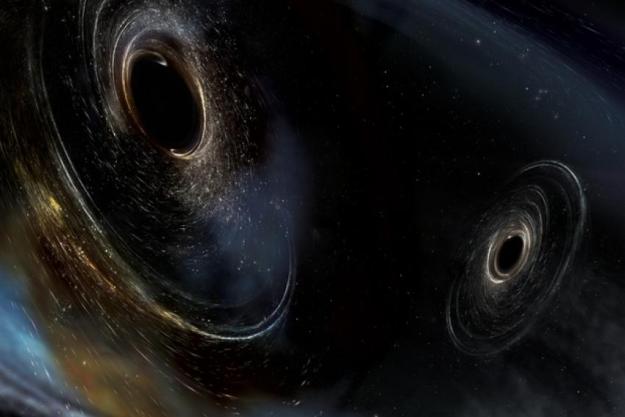At the heart of almost every galaxy, including our own, is a monstrously large black hole with mass millions or billions of times that of the sun. These supermassive black holes are generally lonely beasts, but astronomers have recently discovered the closest-ever pair of them which will eventually merge into one even larger black hole.

The galaxy NCG 7727 is host to the black hole pair, which is located around 89 million light-years away from Earth — far closer than the closest previously recorded pair, which is 470 million light-years away. The recently discovered pair are very close together by black hole standards, at a distance of 1,600 light-years, and are thought to have been brought together by two galaxies merging.
“It is the first time we find two supermassive black holes that are this close to each other, less than half the separation of the previous record holder,” said lead author Karina Voggel, an astronomer at the Strasbourg Observatory in France. The team detected the pair using the Multi-Unit Spectroscopic Explorer (MUSE) instrument on the European Southern Observatory’s Very Large Telescope, which was able to measure the masses of the two black holes by observing how they affected the movements of the stars around them.
They found that the larger of the black holes has a mass 150 million times that of the sun, and its smaller companion has a mass 6.3 million times that of the sun. The fact that the two are so close together (relatively speaking) means it is likely that they will merge together in the future.
“The small separation and velocity of the two black holes indicate that they will merge into one monster black hole, probably within the next 250 million years,” said co-author Holger Baumgardt, a professor at the University of Queensland, Australia.
Editors' Recommendations
- Biggest stellar black hole to date discovered in our galaxy
- Nightmare black hole is the brightest object in the universe
- Hubble images a pair of galaxies caught in the process of merging
- This peculiar galaxy has two supermassive black holes at its heart
- Swift Observatory spots a black hole snacking on a nearby star




